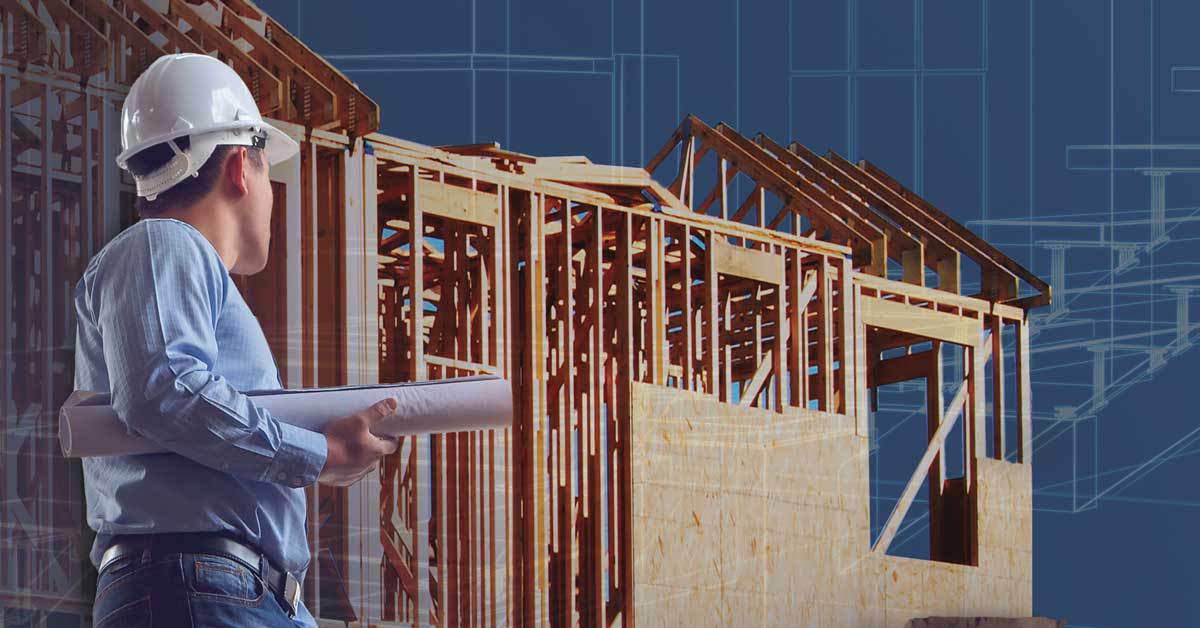In the mortgage industry, your referral- partner network largely determines potential future earnings. Although most originators have it drilled into their heads from day one to constantly seek out and develop relationships with successful real estate agents, they typically receive far fewer directives and resources from their companies to engage homebuilders and condo developers.
There are logical reasons for this lack of emphasis on builders. For one, Realtors typically have clients who are ready to purchase and close quickly, while builders may take four to 12 months to build a home for a client. Realtors and customers can’t always or may not want to wait. In today’s low-inventory real estate market, however, builders are building more speculative homes to accommodate buyers wishing to close in 60 days or less.
The builder sphere may look limited from a distance, but once you immerse yourself in it, you’ll find that it offers solid growth and high-quality referral potential. There’s also an added element of respectability that you get from working with builders. Builders are extremely loyal once you prove you can be trusted as a partner to help sell and close their homes on time.
To build a builder business with a strong foundation, originators must understand five things: the new construction market landscape, strategies for building relationships with builders, how to identify the right builders to target, basic fundamentals of the home-building business itself, and interest rate and product issues that are important to builders.
Landscape
New construction has always been an important part of the real estate market, making up about 10 percent of purchase business nationally, depending on your market. In the South, new construction can account for upward of 20 percent of sales, while in the Midwest it is about 5 percent to 8 percent.
Even in the slowest of markets, people have always desired new homes, but the amount of purchase business can define the visibility of new construction. During the post-crisis refinance boom, when purchases made up roughly 20 percent of total loans, new construction was frequently ignored as a referral base because of the relative low percentage of newly constructed homes — as well as the fact that not a lot of people were moving or buying homes.
Today, the number of homebuilders and condo developers has rebounded, and new construction is surging. Inventory is low across the country and homebuyers want more options. The tables have turned. Purchase financing this year is now more than 50 percent of total originations.
Knowing the landscape lets you know how to improve your numbers. Supplying a fast- growing sector of the industry with this essential component of the business is an obvious opportunity.
Strategies
Originators can take both creative and straight-forward approaches to developing relationships with builders. One good place to start is with your existing Realtor partners. You may find that a Realtor you do business with also does business with a builder but perhaps hasn’t mentioned it or looped you into the opportunity.
One challenge is that mortgage originators and Realtors tend to think transactionally. Builder relationships are different. They aren’t so much about doing one deal, but about the longer-term game plan. Builders want to know that their chosen mortgage- lending partner appreciates the effort and coordination it took to get the house built or the condo readied for their customer.
You also can go direct to the source. Plan visits to model open houses or condo sales centers in new developments and get to know the salespeople. These people are essentially the eyes and ears of the builder, so if you make inroads with them, word has the tendency to work its way upstream to management and ownership.
When looking to build relationships with builders you need to do it in the field first — and be aggressively creative. Show your face on a Saturday. Be likeable and be available. Always be ready to talk to a difficult customer. Maybe the builder has a relocation customer who is tight on time and needs to get prequalified. If the builder’s go-to loan officer is unavailable, this could give you a chance to be a hero.
Target
When it comes to deciding which builders to approach in your area, start “medium.” Look for an operation that builds 30 to 100 homes a year. Generally speaking, these builders won’t have an in-house lender, but will be big enough to self-finance and not require a customer to obtain a more complicated construction-to-perm loan.
Look for builders who appear to appreciate the importance of having a preferred lender program in place. These builders will respond to originators who can show them creative ways to drive additional customer traffic to their sales centers; help with backlog loan-pipeline management; offer dedicated builder-loan processing, appraisal panels and closing services; and share in the cost of special events and marketing, etc. Some builders won’t get it — but you can’t win every battle.
Bigger builders who do 200 to 1,000 homes per year or more will be in tune with this value proposition, but likely already have lender partners. Being a “back-up,” or supplemental originator to a national or large regional builder isn’t a bad place to be, however. The amount of loans not captured by the builder’s regular stable of lenders or in-house mortgage company can be shockingly large.
Start building your builder business just like builders do themselves: Stay close to home, control costs at first and then expand. There may be one or more builders geo- graphically close to you, so keep your eyes open and do your research upfront. Go online and learn a bit about the history of the builder, location of the project, schools, etc.
You may not initially notice a builder’s model or sales center on your way to work or the gym. Sometimes it’s a small trailer with limited signage. Don’t be afraid. Stop in. If the builder’s salesperson isn’t around, try again later. When you do get a chance to talk, be friendly and build rapport. Keep coming back. The business will follow.
Becoming involved in your local homebuilders association and other industry- related organizations is key, because that’s how many builders and developers often seek out opportunities. A cordial cocktail with a builder executive or salesperson at a function might end up being more effective than repeated phone calls, e-mails or drop-ins.
Business
A good loan originator needs a basic understanding of a builder’s product and philosophy. Builders and their employees are passionate about their craft. They’re proud to drive through a community and point to homes they helped in some way to put up — even if they personally didn’t swing a hammer. Houses are real. They are symbols of progress, protection and achievement.
Builders and their teams work in inclement weather and chase city officials for permits. A builder may think to themselves, “We built an entire house from the ground up. All we ask is that you close the darn loan on time!” They’re right. Enter the relationship with due deference and solemn appreciation for what they do.
Every builder has a unique approach, whether it’s upgraded architecture, green de-sign, value, etc. Learn a bit about the builder’s sweet spots. If you can talk confidently with a salesperson or customer and speak to the advantages of a specific plan type or community location, you’re immediately on the inside.
Just be sure you close on time, and don’t leave any details unchecked, like expired docs or project approvals. The extended loan cycle on a new-home sale, which can take from four months to a year or more, can leave a lot of room for error. Work with your ops team to accommodate for builder-specific needs like last-minute final inspections and occupancy certificates, escrow holdback waivers, etc. When you uphold your end of the transaction without false promises or missed closings, you’ll have a loyal partner in return.
Rates and programs
New-construction sales, as mentioned, often require an extended loan cycle. Only about one in 10 lenders offer true extended rate-lock protection products, however. If you can offer such a product, this could well be the foundation of your builder toolkit.
Borrowers may have anxiety over future payments, especially in a rising-rate environment. When they purchase rate-lock protection, you also reassure builders that their buyers are qualified, serious and committed. If a builder or developer regularly has customers who are tightly qualified or perhaps a developer needs to reach a pre-sale requirement for a condo project, an originator who can present extended rate lock programs gives that builder or developer a chance to book sales with solid contracts.
Loan officers also benefit from rate locks because buyers are likely to shop around before closing. Extended rate-lock programs mitigate the perceptual risk you take on with every transaction.
● ● ●
In the end, if you take anything away from this information, let it be this: If you’re a producer looking to stay ahead of the curve, the time is right to build your builder business. ●
Author
-
Jim Colella is vice president, national builder program manager at Guaranteed Rate. He has nearly 25 years of combined experience in mortgage and home- building, including leadership roles in sales, marketing, operations and land development. Colella is the company’s lead resource for new construction initiatives and recruiting centered around growing builder volume. He is directly involved with developing strategic business plans for loan officers and market managers to capture builder and condominium developer accounts.
View all posts







